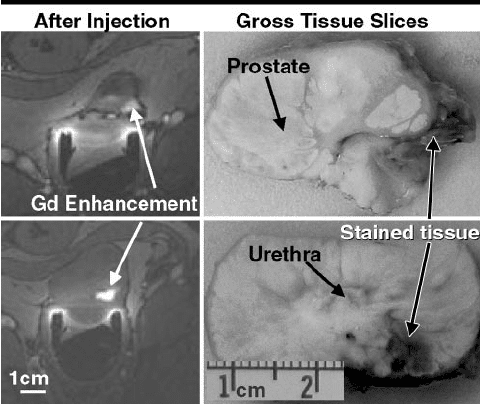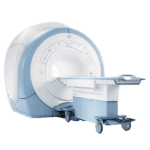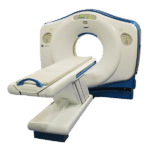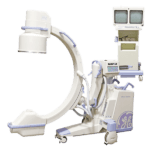Contrast agents are a contrast medium, usually a barium or iodine dye that make the interior body parts more visible on an x-ray
In diagnostic imaging it’s very important to use a contrast agent. Contrast agents are, by definition, “Also called a contrast medium, this is usually a barium or iodine dye that is injected into the area under investigation. The dye makes the interior body parts more visible on an x-ray film.” So the contrast agent is necessary although from case to case the reaction of a patient may differ.
In urology there is a need for contrast agents in various types of examinations. Urology depends on various types of diagnostic imaging examinations such as the MRI, the CT scan and many others to help diagnose conditions and establish a particular form of treatment. The following list is an example of procedures employing the use of imaging and contrast agents:
- Intravenous Pyelography
- Retrograde Pyelography
- Retrograde Urethrogram
- CT Scan
- MRI
- Angiography
- Venography
- Radionuclide Imaging
- Cystography
| TYPE | GENERIC NAME | IODINE, mg/mL | OSMOLALITY, mOsm/KG | VISCOSITY, CPS AT 37° C |
| Iso osmolar | ||||
| Nonionic dimmer | Iotrolan | 300 | 320 | 8.1 |
| Nonionic dimmer | Iodixanol | 320 | 290 | 11.4 |
| Low osmolar | ||||
| Ionic dimmer | Meglumine ioxaglate | 320 | 580 | 7.5 |
| Ionic dimmer | Sodium oxalate | 320 | 580 | 7.5 |
| Nonionic monomer | Iopamidol | 300 | 616 | 4.7 |
| Nonionic monomer | Iohexol | 300 | 640 | 6.3 |
| Nonionic monomer | Ioversol | 300 | 645 | 5.5 |
| Nonionic monomer | Iopromide | 300 | 610 | 4.6 |
| High osmolar | ||||
| Ionic monomer | Sodium iothalamate | 325 | 1843 | 2.75 |
| Ionic monomer | Meglumine diatrizoate | 306 | 1530 | 5.0 |

The contrast agent does have some risks to it but its purpose is to help physicians create a far better image and sometimes a road map in order to determine what course of action to take in favor of a patient. Urology imaging procedures can be daunting to think about but they serve a great purpose. Often times there are imaging tests that are performed without the use of any kind of contrast agent.
There are some risks to using contrast agents
The most common element in contrast agents is iodine. Iodine has radiopacity, defined as obstructing the passage of radiant energy. Other elements in contrast agents simply serve the purpose of reducing toxicity and increasing solubility in order to avoid adverse effects as much as possible. Contrast mediums do have side effects as does anything in healthcare. The contrast medium reactions vary from patient to patient and in terms of severity.
An example of minor reactions can include the following:
- Nausea
- Headache
- Urticaria
More severe reactions require treatment but are likely to occur to one out of every 1,000 patients injected with contrast mediums. The contrast agent is not always easy to bypass all the way simply because often times a basic procedure may miss something and lead to a manner of treatment that may be inadequate and create another problem. Most studies presumed not to require the use of contrast agents, now require it. The MRI is an example of a scan that was thought not to need contrast agents but requiring it now. The following is a table of properties for commonly used radio contrast media:
Get Started
Request Pricing Today!
We’re here to help! Simply fill out the form to tell us a bit about your project. We’ll contact you to set up a conversation so we can discuss how we can best meet your needs. Thank you for considering us!
Great support & services
Save time and energy
Peace of mind
Risk reduction
Contrast agents are necessary for use in urologic imaging and they help more than they hinder, at least when you measure the likelihood of an adverse reaction against the likelihood of successful treatment. It’s important to understand that ultimately there is a huge variety of imaging procedures that help in diagnosing any kidney, bladder, or urethra issues that may plague a patient.
The more a patient understands the pluses of these tests the more a patient is likely to understand that the risks are often times relatively miniscule. If you are having a CT scan, MRI scans, or if you are having an X-Ray, it’s good to know about the procedure.
Practitioner’s Role
Concerns about prostate cancer, kidney failure, and many other problems are becoming more prevalent. It’s good for practitioners to not only educate their patients about the types of contrast agents but also the type of equipment used for any procedure. It’s good for everyone in healthcare facilities big and small to look for the very best equipment with which to perform procedures.
If you have any questions about the best type of equipment for diagnostic imaging procedures in general, please feel free to give us a call. We here at Amber look forward to answering any questions you may have.
Bobby Serros
President/CEO
407.438.7847
bobbys@amberusa.com
References:



